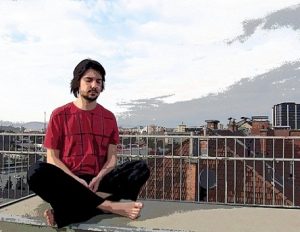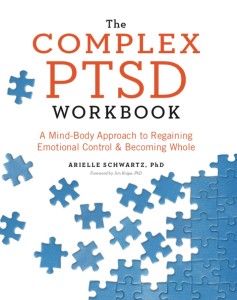Demystifying Mindfulness
What is mindfulness really? In short, it is the practice of paying attention. But, we tend to “jump ship” from the present moment when we feel uncomfortable emotionally. We avoid feeling our discomfort by distracting ourselves or pushing people away. We all do it, it’s human. However, the world needs us to show up, now.
The world is calling for authentic presence and requires that we be with emotions in healthy ways. Unsupported grief can result in feeling isolated from our community. Ignored fear and rage can turn into violence that kills. Cultivating mindfulness is about broadening our capacity to be with ourselves and others even when we feel uncomfortable.
“There are common myths and misconceptions that mindfulness is a religion, or about fixing ourselves, or about seeking enlightenment. However, mindfulness is really about showing up in the world to be with life as it is. Anything in life can be used to separate us from the world or to bring us closer to each other. At any moment you have a choice about how you want to live your life.”
-Dr. Arielle Schwartz
5 Mindfulness Myths
The first time I engaged in a day of mindfulness meditation I expected that I would feel great during and afterwards. I thought, what a great opportunity to relax. Was I wrong! The very opposite happened. I felt agitated; irritated by my never-ending mental gymnastics. My body was uncomfortable; I couldn’t sit still without fidgeting. By the end of the day I felt angry and was convinced I had failed.
Embarrassed, I initially kept my experience to myself. If only someone had told me that that these feelings are normal. Because little did I know back then but I was doing it right. All of that discomfort was actually a sign that I was on the right track.
It is easy to be misled by misconceptions about mindfulness practices. Let’s take closer look by deconstructing the common mindfulness myths:
- Myth 1: Mindfulness is religion. No, you do not need to be a Buddhist to be mindful. Mindfulness can be practiced by anyone.
- Myth 2: Mindfulness is meditation. Not necessarily. While meditation offers the opportunity to practice being mindful they are not synonymous. We practice meditation so that we may remain aware off the cushion.
- Myth 3: Mindfulness is about enlightenment. Being mindful is not about becoming smarter, better, or superhuman. Mindfulness is often deeply humbling as we develop our capacity to honestly reflect upon our own humanness.
- Myth 4: Mindfulness is relaxing. Sometimes but not always. Simply paying attention can increase our awareness of turbulent emotions or conflicts we were avoiding. However, mindfulness often gives us the tools to work more consciously with our experiences.
- Myth 5: Mindfulness is about self-improvement. Watch out for this one. When we use mindfulness as a “fix it” tool we can become aggressive. Our capacity to pay attention needs to be tempered by the cultivation of compassion.
Living the Mindful Life
Being mindful is not about fixing ourselves or becoming more enlightened. In contrast, the foundation of mindfulness is acceptance; a practice that asks us to reflect honestly on ourselves, our choices, and our interactions. With this in mind, here are some gentle ways to increase self-awareness into your daily life, on and off of your mat:
- Slow Down: It is easy to get caught in the fast pace of life. Simply pausing for a moment can give you a chance to fully experience the moment.
- Breathe Deeply: Conscious breathing is widely considered the fastest way to change our mental and emotional state. In our day to day living we tend to breathe more shallowly but as a result we dull our senses and we push our emotions away. We can cultivate deep belly breathing to support big emotional experiences.
- Check in with your Body: Scan your body and notice your sensations. Notice the temperature of your body. Bring awareness to areas of tension and areas of comfort. Allow the sensations of your body become your guide. Listen to your aversions so that you can recognize your “No.” Pay attention to what brings you pleasure so that you can feel your “Yes!”
- Observe your Mind: Mindfulness emphasizes moment-to-moment awareness of your thoughts and emotions as they occur. Pay attention to your thoughts when you are alone so that you can be more conscious of your words when you are with others.
- Attend to your Emotions: Cultivating mindfulness is extremely valuable when it comes to emotional intelligence. In today’s world we must broaden our capacity to attend to our emotions in healthy ways. Initially it is common to want to push strong feelings of grief or anger away. As we continue to practice we aim to increase our ability to tolerate the discomfort of difficult emotions. Over time, the ability to be compassionately present with our own feelings can translate into our capacity to be attentive and responsive to the feelings of others.
The world is calling for our authentic presence. Anything in life can be used to separate us from the world or to bring us closer to each other. At any moment you have a choice about how you want to live your life.
Related Posts
Want a mind-body approach to healing PTSD?
Connect to this post? This was an excerpt from my book, The Complex PTSD Workbook, now available on Amazon! Click here to check it out and increase your toolbox for healing. Whether you are a client or a therapist this book will offer a guided approach to trauma recovery.
About Dr. Arielle Schwartz
Dr. Arielle Schwartz is a licensed clinical psychologist, wife, and mother in Boulder, CO. She offers trainings for therapists, maintains a private practice, and has passions for the outdoors, yoga, and writing. Dr. Schwartz is the author of The Complex PTSD Workbook: A Mind-Body Approach to Regaining Emotional Control and Becoming Whole. She is the developer of Resilience-Informed Therapy which applies research on trauma recovery to form a strength-based, trauma treatment model that includes Eye Movement Desensitization and Reprocessing (EMDR), somatic (body-centered) psychology and time-tested relational psychotherapy. Like Dr. Arielle Schwartz on Facebook, follow her on Linkedin and sign up for email updates to stay up to date with all her posts.






A beautifully simple reminder. Clearly and mindfully explained. Thank you, Arielle.
Thanks, Kert. I so appreciate getting comments and feedback. Wishing you well.
Arielle
Thanks Arielle for this great article. Mindfulness has become such “buzz” in the psychological community. I SO appreciate how you name these myths about mindfulness. I feel very lucky to have had such great teachers at Naropa, who were so far ahead of the curve on this issue, and who warned me of the possible “shadow” sides of mindfulness. In the end, mindfulness had been both profoundly humbling and continues to expand my field of possibilities. I also, must be forever on the lookout on how I can use it in ways to disconnect and escape from what is. Blessings and sincere nameste
Thank you, Eric.
Appreciate you commenting in about the shadow side of mindfulness.
Look forward to connecting with you again soon, my friend.
Arielle